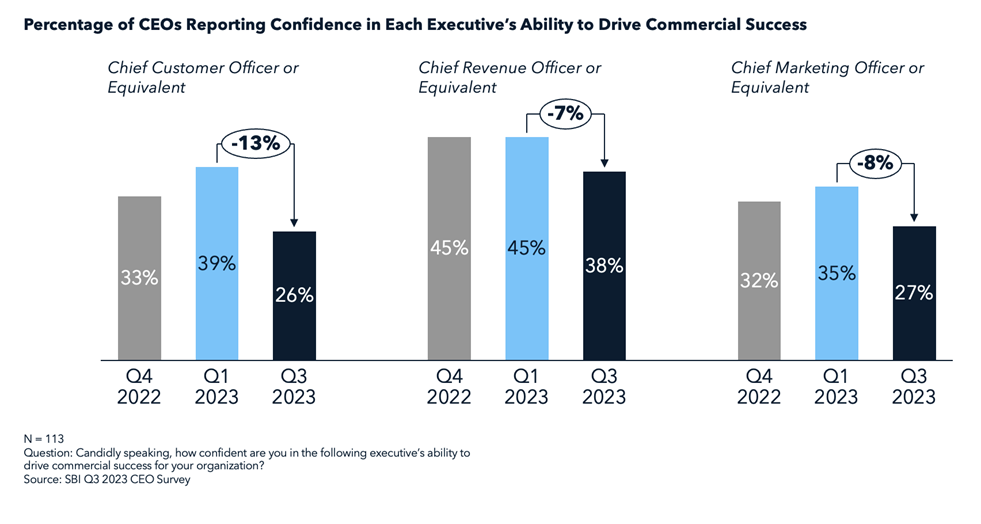With a more optimistic 2024 ahead, most CEOs are ready to actively pursue growth, including a shift toward higher expenses and more investments in mergers and acquisitions (M&A). However, shaky confidence in their Go-to-Market (GTM) leadership teams may pose new challenges for CEOs, demanding companies remain focused on their growth objectives despite transitional disruptions.
To help you traverse the rough waters ahead and achieve your goals, we offer you insights from SBI’s latest edition of the CEO Value Creation Pulse. The full report showcases how CEOs and other C-level executives are planning for value creation in the upcoming quarters and the GTM strategies and tactics that will get them there.
Confidence in GTM leadership teams is softening
GTM leadership teams have faced one of the most challenging market environments of their careers. Coupled with significant shifts in value creation strategy, product and service offerings, and revenue models, CEOs are left wondering if they have the right person in charge of what’s ahead.

Our data shows a softening trend in CEOs’ confidence in their GTM executives, with a drop of 7 to 13 percent between Q1 and Q3 2023. Most affected were the CCOs and CMOs, with only 26% of CEOs reporting confidence in their roles; CROs were somewhat better at 38% CEO confidence, but even that number looks to be on the decline.
Navigating leadership transitions on the road to growth in 2024
For CEOs and GTM leadership teams facing the prospect of executive churn, SBI has two key pieces of advice to help you avoid common pitfalls and keep your companies focused on their growth targets in 2024.
Critically, CEOs should be aware that heightened leadership exits require immediate operational focus. By establishing a strong fact base to reprioritize the right accounts, tighten territories, and ensure comprehensive coverage, GTM leadership teams stand to minimize and counter disruption caused by any commercial leader exits. Maintaining a strong foundation for GTM teams to build upon creates a stable and focused revenue operation that can weather any leadership transitions, which helps CEOs keep their companies focused on the outcomes.
Once preparations for leadership transitions are made, CEOs should then look to tighten up GTM leadership and team alignment to drive efficiency and customer satisfaction. Start by establishing clear RACIs for cross-sell, up-sell, and retention activities to reduce overlaps and increase potential ACV. Such measures will also help leaders identify duplicates in accountabilities in metrics, role expectations, and goals, creating opportunities for more comprehensive optimization measures, including detailed role-based time and task audits to identify redundant time spent.
Learn more about the previous three trends and uncover more insights in the SBI CEO Value Creation Pulse, available for download now. Read the research here.

